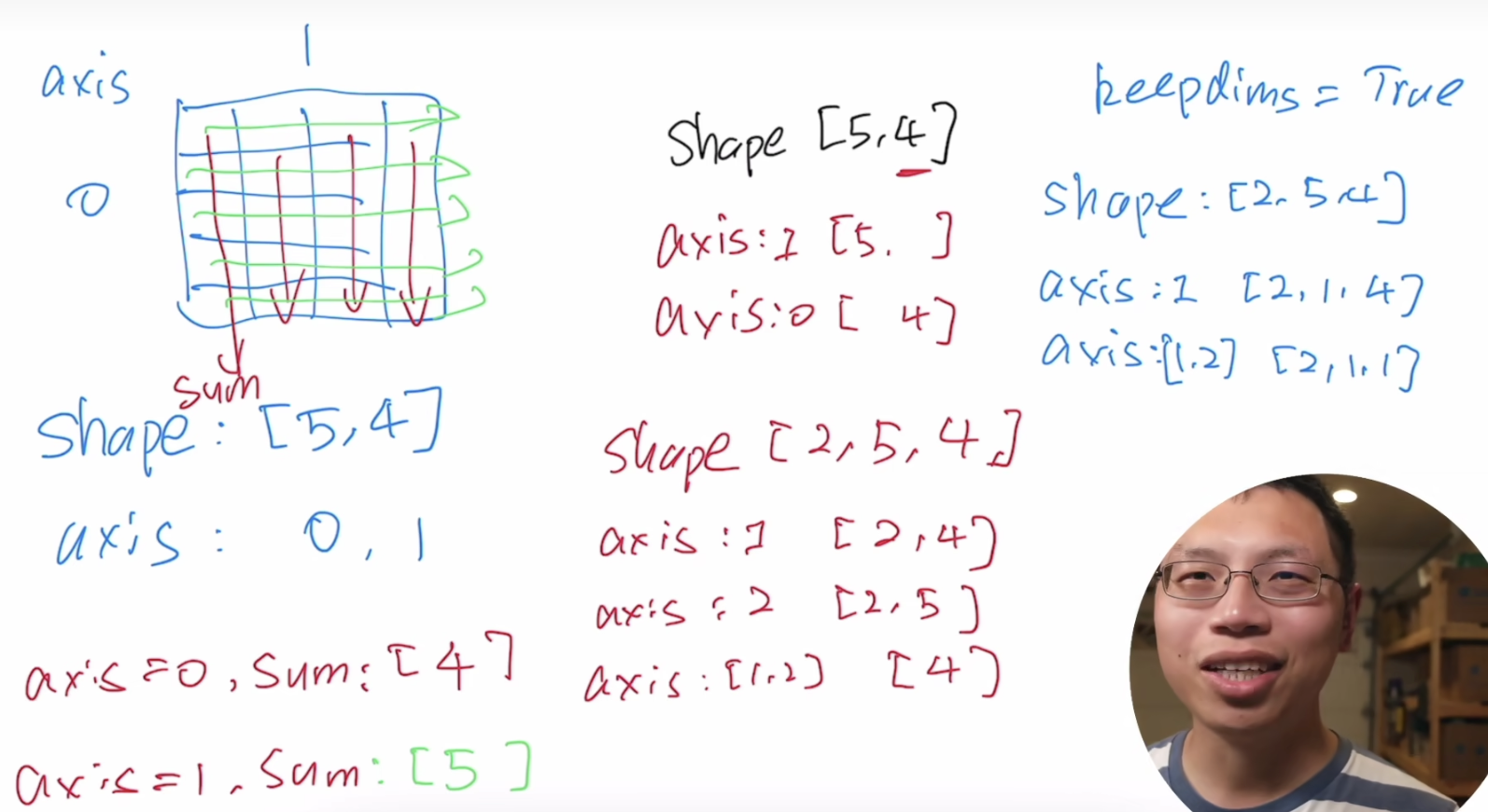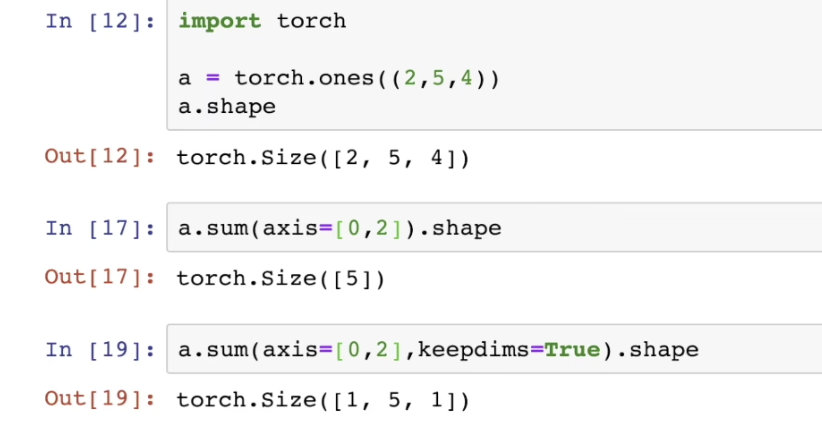2.2 线性代数
沐神视频讲解:B站
教材:zh-v2.d2l.ai
标量
简单操作
长度
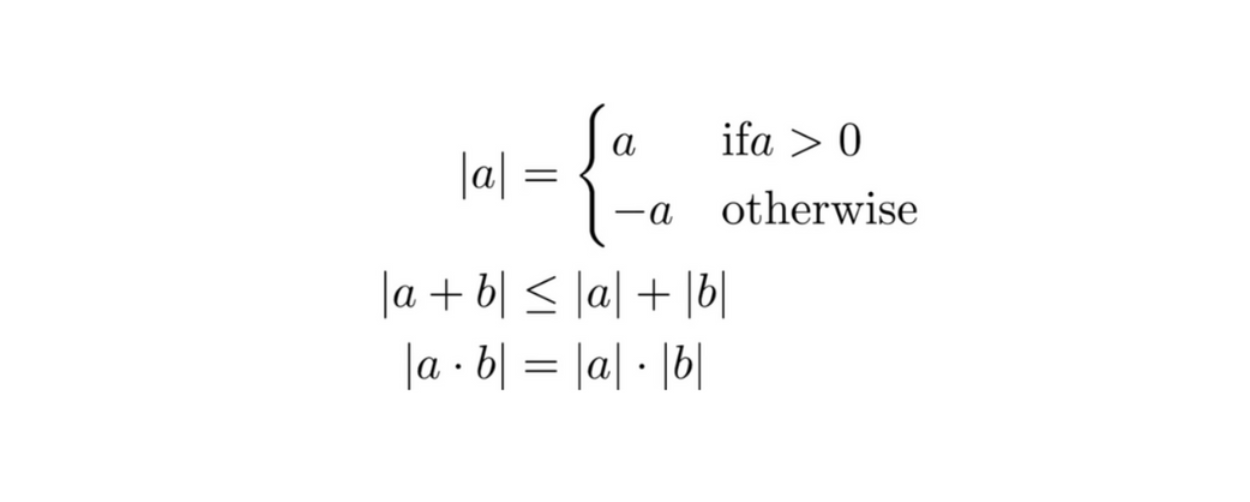
向量
简单操作
长度

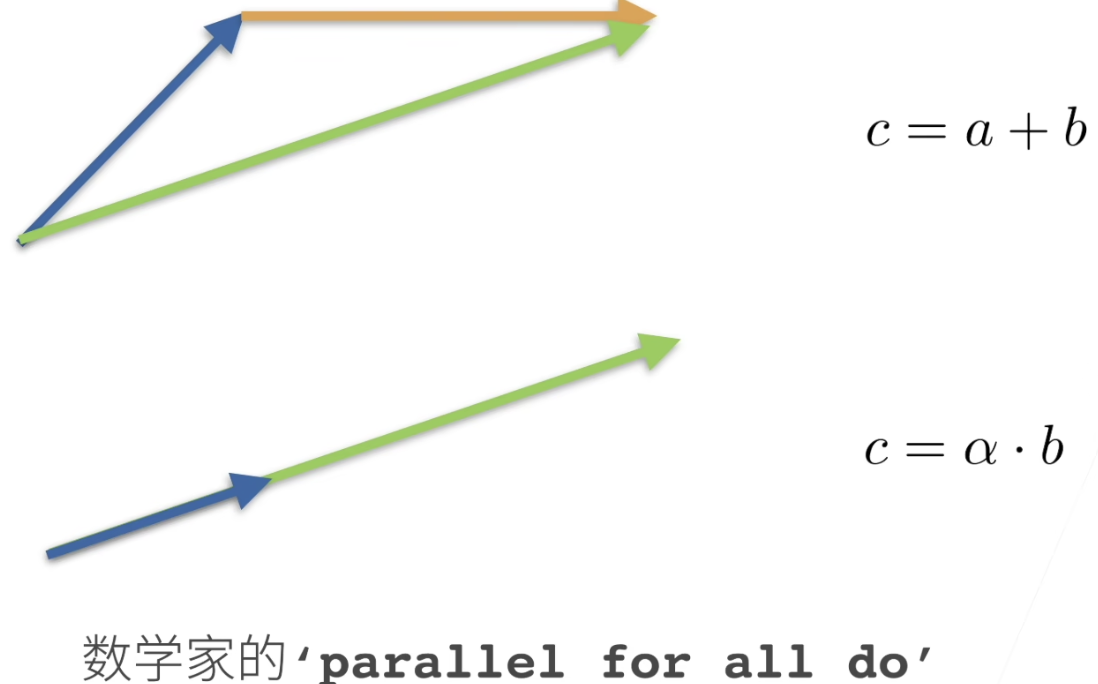
点乘
正交

矩阵
简单操作
乘法(矩阵乘以向量)
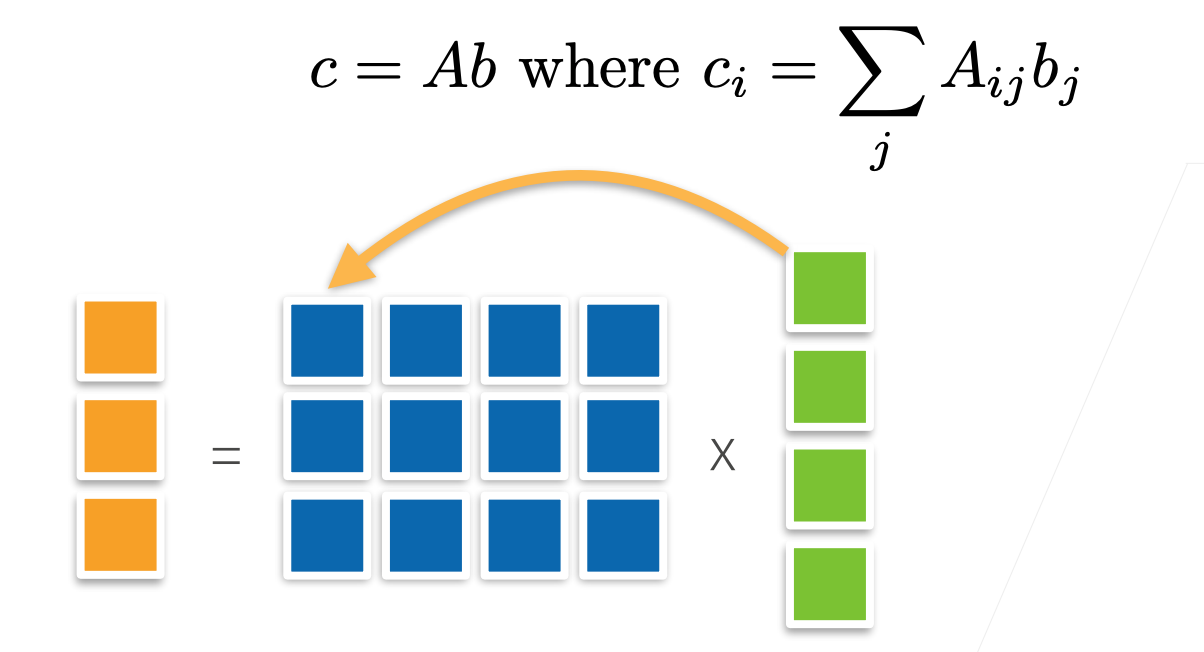
- 乘法(矩阵乘以矩阵)
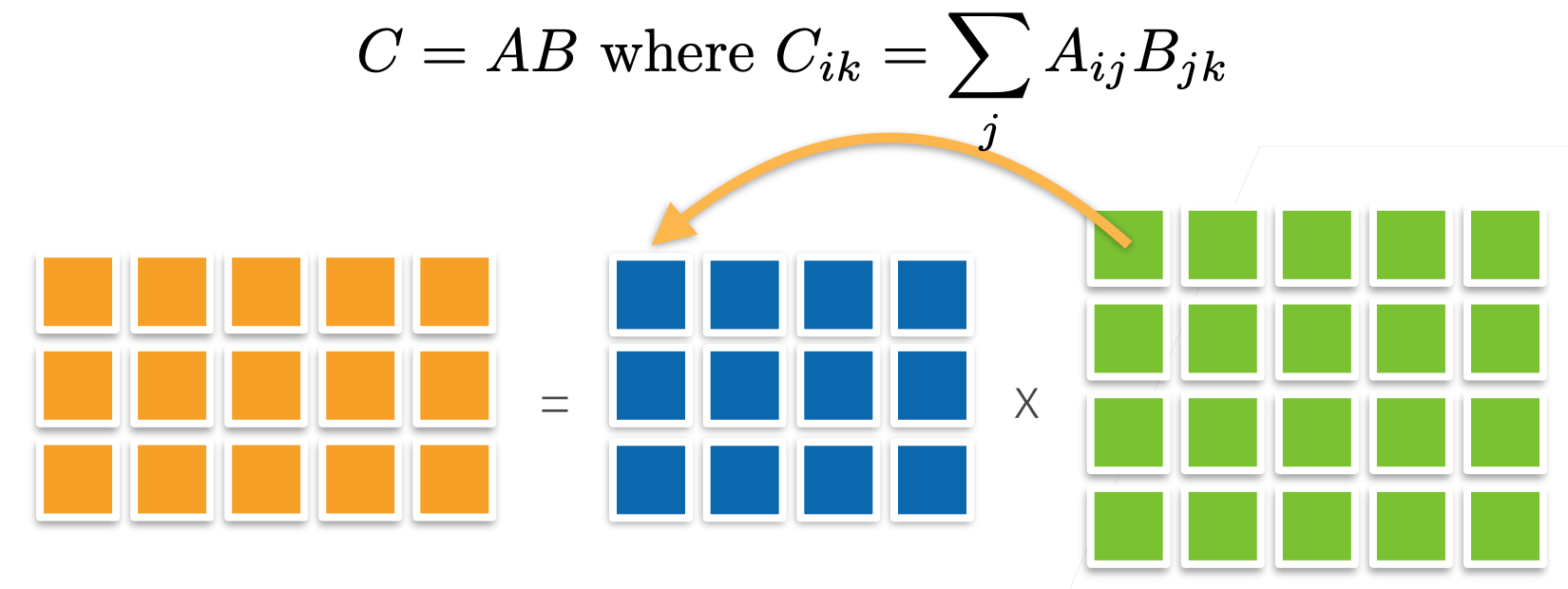
- 范数

- 取决于如何衡量b和c的长度
- 常见范数
- 矩阵范数:最小的满足上面公式的值
- Frobenius范数
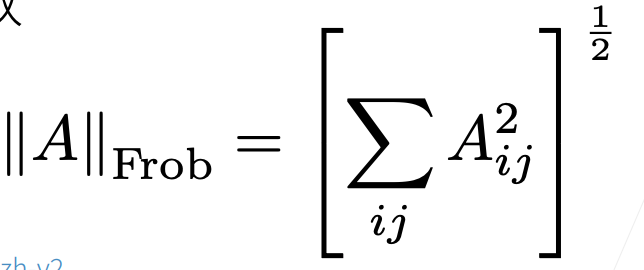
特殊矩阵
- 对称和反对称

- 正定

- 正交矩阵
- 所有行都相互正交
- 所有行都有单位长度

- 可以写成$UU^T = 1$
- 置换矩阵

- 置换矩阵是正交矩阵
矩阵
- 特征向量和特征值
- 不被矩阵改变方向的向量

- 对称矩阵总是可以找到特征向量
Code
# 标量由只有一个元素的张量表示
import torch
x = torch.tensor(3.0)
y = torch.tensor(2.0)
x + y, x * y, x / y, x**y
# (tensor(5.), tensor(6.), tensor(1.5000), tensor(9.))
# 向量可以被视为标量值组成的列表
x = torch.arange(4) # tensor([0, 1, 2, 3])
# 通过张量的索引来访问任一元素
x[3] # tensor(3)
# 访问张量的长度
len(x) # 4
# 只有一个轴的张量,形状只有一个元素
x.shape # torch.Size([4])
# 通过指定两个分量m和n来创建一个形状为m x n的矩阵
A = torch.arange(20).reshape(5, 4)
# tensor([[ 0, 1, 2, 3],
# [ 4, 5, 6, 7],
# [ 8, 9, 10, 11],
# [12, 13, 14, 15],
# [16, 17, 18, 19]])
# 矩阵的转置
A.T
# tensor([[ 0, 4, 8, 12, 16],
# [ 1, 5, 9, 13, 17],
# [ 2, 6, 10, 14, 18],
# [ 3, 7, 11, 15, 19]])
# 对称矩阵(symmetric matrix)A 等于其转置:A = A^T
B = torch.tensor([[1, 2, 3], [2, 0, 4], [3, 4, 5]])
# tensor([[1, 2, 3],
# [2, 0, 4],
# [3, 4, 5]])
B == B.T
# tensor([[True, True, True],
# [True, True, True],
# [True, True, True]])
# 就像向量是标量的推广,矩阵是向量的推广一样,我们可以构建具有更多轴的数据结构
X = torch.arange(24).reshape(2, 3, 4)
# tensor([[[ 0, 1, 2, 3],
# [ 4, 5, 6, 7],
# [ 8, 9, 10, 11]],
# [[12, 13, 14, 15],
# [16, 17, 18, 19],
# [20, 21, 22, 23]]])
# 给定具有相同形状的任意两个张量,任何按元素二元运算的结果都将是相同形状的张量
A = torch.arange(20, dtype=torch.float32).reshape(5, 4)
B = A.clone()
A, A + B
# (tensor([[ 0., 1., 2., 3.],
# [ 4., 5., 6., 7.],
# [ 8., 9., 10., 11.],
# [12., 13., 14., 15.],
# [16., 17., 18., 19.]]),
# tensor([[ 0., 2., 4., 6.],
# [ 8., 10., 12., 14.],
# [16., 18., 20., 22.],
# [24., 26., 28., 30.],
# [32., 34., 36., 38.]]))
# 两个矩阵的按元素乘法称为*Hadamard积*(Hadamard product)
A * B
# tensor([[ 0., 1., 4., 9.],
# [ 16., 25., 36., 49.],
# [ 64., 81., 100., 121.],
# [144., 169., 196., 225.],
# [256., 289., 324., 361.]])
a = 2
X = torch.arange(24).reshape(2, 3, 4)
a + X, (a * X).shape
# (tensor([[[ 2, 3, 4, 5],
# [ 6, 7, 8, 9],
# [10, 11, 12, 13]],
# [[14, 15, 16, 17],
# [18, 19, 20, 21],
# [22, 23, 24, 25]]]),
# torch.Size([2, 3, 4]))
# 计算其元素的和
x = torch.arange(4, dtype=torch.float32)
x, x.sum()
# (tensor([0., 1., 2., 3.]), tensor(6.))
# 表示任意形状张量的元素和
A.shape, A.sum()
# (torch.Size([5, 4]), tensor(190.))
# 指定张量沿哪一个轴来通过求和降低维度
A_sum_axis0 = A.sum(axis=0)
A_sum_axis0, A_sum_axis0.shape
# (tensor([40., 45., 50., 55.]), torch.Size([4]))
A_sum_axis1 = A.sum(axis=1)
A_sum_axis1, A_sum_axis1.shape
# (tensor([ 6., 22., 38., 54., 70.]), torch.Size([5]))
A.sum(axis=[0, 1])
# tensor(190.)
# 一个与求和相关的量是平均值(mean或average)
A.mean(), A.sum() / A.numel()
# (tensor(9.5000), tensor(9.5000))
A.mean(axis=0), A.sum(axis=0) / A.shape[0]
# (tensor([ 8., 9., 10., 11.]), tensor([ 8., 9., 10., 11.]))
# 计算总和或均值时保持轴数不变
sum_A = A.sum(axis=1, keepdims=True)
# tensor([[ 6.], [22.], [38.], [54.], [70.]])
# 通过广播将A除以sum_A
A / sum_A
# tensor([[0.0000, 0.1667, 0.3333, 0.5000],
# [0.1818, 0.2273, 0.2727, 0.3182],
# [0.21./05, 0.2368, 0.2632, 0.2895],
# [0.2222, 0.2407, 0.2593, 0.2778],
# [0.2286, 0.2429, 0.2571, 0.2714]])
# 某个轴计算A元素的累积总和
A.cumsum(axis=0)
# tensor([[ 0., 1., 2., 3.],
# [ 4., 6., 8., 10.],
# [12., 15., 18., 21.],
# [24., 28., 32., 36.],
# [40., 45., 50., 55.]])
# 点积是相同位置的按元素乘积的和
y = torch.ones(4, dtype = torch.float32)
x, y, torch.dot(x, y)
# (tensor([0., 1., 2., 3.]), tensor([1., 1., 1., 1.]), tensor(6.))
# 我们可以通过执行按元素乘法,然后进行求和来表示两个向量的点积
torch.sum(x * y)
# tensor(6.)
# 矩阵向量积Ax是一个长度为m的列向量
A.shape, x.shape, torch.mv(A, x)
# (torch.Size([5, 4]), torch.Size([4]), tensor([ 14., 38., 62., 86., 110.]))
# 我们可以将矩阵-矩阵乘法AB看作简单地执行m次矩阵-向量积,并将结果拼接在一起,形成一个n x m矩阵
B = torch.ones(4, 3)
torch.mm(A, B)
# tensor([[ 6., 6., 6.],
# [22., 22., 22.],
# [38., 38., 38.],
# [54., 54., 54.],
# [70., 70., 70.]])

补充
